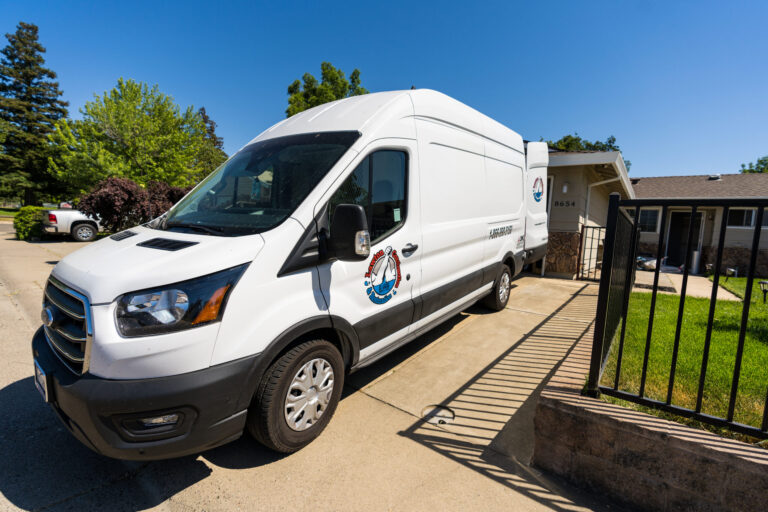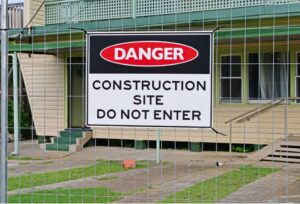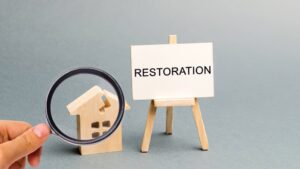Early Fire Damage Insurance Payments Don’t Cover Everything – Now What?

Table of Contents
Introduction
Have you recently received an early insurance payment for fire damage, only to realize it doesn’t cover everything? You’re not alone. Navigating the insurance claims payment process can be overwhelming, especially when unexpected expenses start piling up. From hidden structural damage to smoke residue cleanup, the costs can quickly exceed initial estimates.
Understanding the basics of homeowners insurance is crucial to ensuring you’re fully covered in the aftermath of a disaster. But what happens when your insurance falls short? Do you have a plan to bridge the gap? In this post, we’ll explore why early payments often leave homeowners scrambling for solutions and what you can do next to protect your property and financial future.
Whether you’re just starting to learn about insurance basics or you’ve been through the claims process before, this guide will equip you with the knowledge you need to make informed decisions. Ready to take control of your recovery journey? Let’s dive in.
Understanding Early Insurance Payments
Have you ever wondered why insurance companies offer early payments after a disaster? These upfront payments can feel like a lifeline when faced with the overwhelming costs of fire damage. But what many homeowners don’t realize is that these initial payments are often just the beginning – and they rarely cover everything.
Early insurance payments are designed to help you get back on your feet quickly, covering immediate expenses like temporary housing or urgent repairs. However, they come with limitations. In most cases, these payments are based on preliminary assessments, which might not account for hidden damages or long-term restoration needs.
So, what’s typically left out? Here are a few common gaps:
- Hidden Structural Damage: Early payments might overlook damage behind walls or in the foundation, which can be costly to repair once discovered.
- Smoke and Soot Cleanup: The cost of thorough cleaning and deodorization often exceeds initial estimates.
- Temporary Living Expenses: If repairs take longer than expected, you might exhaust your coverage for temporary housing.
- Replacement vs. Restoration Costs: You may find that the cost to replace items is higher than the amount provided for repairs.

It’s crucial to understand the basics of homeowners insurance and the insurance claims payment process to avoid these pitfalls. Reviewing your policy can help you identify potential coverage gaps before disaster strikes.
Wondering what to do if you’re already facing these challenges? Don’t worry – in the next section, we’ll explore strategic steps to take when your insurance falls short.
Gaps in Coverage to Watch Out For
Did you know that even the most comprehensive homeowners insurance policies can leave you with unexpected expenses? It’s frustrating to realize that your early insurance payment didn’t cover everything – but understanding the gaps can help you avoid costly surprises. So, what are the most common coverage gaps to watch out for after fire damage?
1. Hidden Structural Damages
Fire can weaken the structure of your home in ways that aren’t immediately visible. From compromised support beams to damaged wiring behind walls, these issues can be expensive to repair. Unfortunately, early payments are often based on surface-level assessments and might not account for these hidden costs. Make sure to:
- Schedule a thorough inspection by a licensed contractor.
- Document any hidden damages as soon as they’re discovered.
- Communicate with your insurance adjuster about updating your claim.
2. Smoke and Soot Residue Cleaning Costs
It’s not just the flames that cause damage – smoke and soot can infiltrate every corner of your home. Cleaning and deodorizing affected areas require specialized services, which can be costly. If your policy doesn’t fully cover smoke damage, consider:
- Requesting a detailed estimate from a professional cleaning service.
- Checking if your policy includes additional living expenses if the cleanup makes your home temporarily uninhabitable.
3. Temporary Living Expenses Beyond Initial Estimates
After a fire, you might need temporary housing while your home is being repaired. Most homeowners insurance policies include coverage for additional living expenses, but what if the repairs take longer than expected? If you’ve already exhausted your allowance, you could be left paying out-of-pocket. To avoid this:
- Keep detailed records of all expenses related to temporary housing.
- Communicate any delays in repairs with your insurer to see if extensions are possible.

4. Restoration vs. Replacement Costs
Here’s a tricky situation: your insurance might only pay for repairs, but the damage may be severe enough to require a full replacement. This is common with custom cabinetry, flooring, or older construction materials. In these cases:
- Get multiple quotes to compare restoration and replacement costs.
- Work with your insurance adjuster to determine the most cost-effective solution.
Navigating these gaps can be challenging, but understanding the nuances of the insurance claims payment process is key. Ready to learn what steps to take if you find yourself underinsured? In the next section, we’ll explore strategic actions to bridge the gap.
Steps to Take When Insurance Falls Short
Realizing that your early insurance payment doesn’t cover everything can be a stressful experience. But don’t panic – you have options. Knowing how to navigate the insurance claims payment process effectively can help you secure the compensation you need to fully recover. Here’s what to do next.
1. Review Your Insurance Policy in Detail
The first step is to understand exactly what your homeowners insurance covers. This means going beyond the basics and carefully reviewing the fine print. Look for specifics on:
- Coverage limits for fire damage, smoke cleanup, and temporary living expenses.
- Exclusions or conditions that might impact your claim.
- The process for filing a supplemental claim if additional damages are discovered.
If your policy language is confusing, don’t hesitate to reach out to your insurance agent or a public adjuster for clarification.
2. Document All Damages and Expenses
Insurance companies rely on evidence, so detailed documentation is crucial. Start by:
- Taking clear, high-resolution photos of all damages, including hidden structural issues.
- Keeping receipts and invoices for all expenses related to repairs, cleaning, and temporary housing.
- Creating a timeline of events, from the fire incident to ongoing recovery efforts.
The more organized and detailed your records are, the stronger your case will be when negotiating for additional compensation.
3. Communicate with Your Insurance Adjuster
Open communication is key to maximizing your insurance claim. If you’ve discovered additional damages or your expenses have exceeded the initial payout, contact your adjuster promptly. When doing so:
- Be honest and transparent about the situation.
- Provide supporting documents, including estimates from contractors or cleaning services.
- Request a reassessment of your claim, highlighting any overlooked damages.
It’s okay to be persistent but always remain polite and professional. If necessary, consider involving a public adjuster who can advocate on your behalf.

4. File for Supplemental Claims
Did you know that you can request additional funds through a supplemental claim? This is particularly useful when hidden damages or underestimated costs are discovered. To do this:
- Submit updated estimates and repair quotes to your insurance company.
- Clearly explain why the additional funds are necessary.
- Follow up regularly to ensure your claim is being processed.
While it may require patience and perseverance, filing for a supplemental claim can help bridge the gap between your early payment and actual expenses.
Feeling overwhelmed by the process? Don’t worry – in the next section, we’ll explore additional financial support options to help you recover fully.
Seeking Additional Financial Support
What happens if your insurance falls short, and even a supplemental claim doesn’t cover all the expenses? Don’t worry – you’re not out of options. There are several avenues to explore for additional financial support, allowing you to bridge the gap and get your life back on track. Here’s how to do it.
1. Exploring Government Assistance Programs
After a major disaster, state and federal agencies often provide financial aid to affected homeowners. This could include grants, low-interest loans, or temporary housing assistance. To take advantage of these programs:
- Check Eligibility: Visit official websites like FEMA or your state’s emergency management agency to see if you qualify.
- Apply Promptly: Deadlines can be tight, so submit your application as soon as possible.
- Provide Detailed Documentation: Include insurance claim records, damage photos, and expense receipts to support your request.
While government aid is not guaranteed, it can be a helpful resource, especially when insurance payments fall short.
2. Applying for Disaster Relief Loans
If grants aren’t available or don’t cover enough, consider applying for a disaster relief loan. Agencies like the Small Business Administration (SBA) offer low-interest loans for homeowners to repair or replace damaged property. Here’s how to get started:
- Research Loan Options: Review the terms, interest rates, and repayment plans.
- Prepare Your Financial Documents: Gather tax returns, proof of income, and insurance claim details.
- Submit a Detailed Application: Clearly outline the purpose of the loan and how the funds will be used.
These loans can provide significant financial support, allowing you to cover costly repairs or replace essential belongings.

3. Negotiating Payment Plans with Contractors
If upfront costs are overwhelming, don’t hesitate to negotiate payment plans with your contractors. Many restoration companies understand the complexities of insurance claims and are willing to work with you on flexible terms. Consider:
- Requesting a Payment Schedule: Breaking down costs into manageable monthly payments.
- Discussing Deferred Payments: Some contractors may allow you to defer payments until your supplemental insurance claim is processed.
- Combining Funding Sources: Using a combination of insurance payouts, loans, and payment plans to cover all expenses.
Effective communication and clear agreements can prevent financial strain during the restoration process.
4. Utilizing Personal Savings and Emergency Funds
While it’s not the first choice for most, dipping into personal savings or emergency funds can provide immediate relief. If you go this route:
- Prioritize Essential Repairs: Focus on structural integrity and safety-related fixes first.
- Track All Expenses: Keep detailed records to potentially seek reimbursement from insurance later.
- Replenish Savings Gradually: Once you’re back on your feet, create a plan to rebuild your emergency fund.
Combining personal funds with other financial support methods can help you cover all necessary expenses without excessive debt.
Navigating the financial aftermath of fire damage can be overwhelming, but knowing your options makes it manageable. In the next section, we’ll discuss the benefits of working with restoration professionals to maximize your recovery.
Working with Restoration Professionals
Feeling overwhelmed by the fire damage and unsure where to start? You don’t have to face it alone. Partnering with experienced restoration professionals can make all the difference, ensuring your property is restored safely and efficiently. But how do you find the right team, and how can they help you maximize your insurance claim? Let’s explore.
1. The Value of a Detailed Damage Assessment
One of the biggest challenges in the insurance claims payment process is accurately documenting the full extent of the damage. Restoration professionals provide comprehensive inspections that can reveal hidden structural issues, smoke residue, and water damage from firefighting efforts. Here’s why this matters:
- Accurate Damage Documentation: Detailed reports support your insurance claim, increasing your chances of receiving adequate compensation.
- Uncovering Hidden Costs: Professionals can identify damages that might be missed during an initial inspection, preventing costly surprises later.
- Supporting Supplemental Claims: If additional damages are found, these reports can be used to justify a supplemental claim for extra funds.
Don’t leave money on the table – a thorough assessment is your best defense against underpayment.
2. Choosing the Right Restoration Company
Not all restoration companies are created equal. Selecting the right team can significantly impact your recovery process, but how do you make the best choice? Consider the following:
- Experience with Insurance Claims: Choose a company that understands the homeowners insurance claims process and can communicate effectively with your adjuster.
- Certifications and Licensing: Look for certified professionals who follow industry standards, such as those certified by the Institute of Inspection Cleaning and Restoration Certification (IICRC).
- Reputation and Reviews: Research online reviews and ask for referrals to ensure you’re working with a reputable team.

Taking the time to vet your restoration company can save you headaches down the road and ensure quality workmanship.
3. Coordinating with Insurance for Maximum Coverage
One of the biggest advantages of working with restoration professionals is their ability to coordinate directly with your insurance company. They can:
- Provide Detailed Estimates: Accurate cost estimates help justify your claim, reducing the risk of disputes with your insurer.
- Communicate Directly with Adjusters: Professionals can advocate on your behalf, ensuring nothing is overlooked.
- Streamline the Claims Process: By handling paperwork and documentation, they minimize delays and help you receive payments faster.
This collaboration reduces your stress and maximizes your insurance payout.
4. Avoiding Out-of-Pocket Surprises
No one wants to be blindsided by unexpected costs during the restoration process. Working with experienced professionals helps you:
- Receive Transparent Pricing: Reputable companies provide clear, upfront estimates, so you know what to expect.
- Navigate Insurance Limitations: Professionals understand coverage limitations and can help you find cost-effective solutions.
- Plan for Supplemental Claims: If additional repairs are needed, they’ll help you document and submit supplemental claims efficiently.
With the right team on your side, you can avoid financial surprises and focus on rebuilding your life.
Partnering with restoration experts not only speeds up the recovery process but also ensures you’re maximizing your insurance claim. Ready to take the next steps? In conclusion, we’ll summarize key takeaways and help you move forward with confidence.
Conclusion: Taking Control of Your Recovery Journey
Facing fire damage is overwhelming, but discovering that your early insurance payment doesn’t cover everything can feel downright frustrating. The good news? You’re not powerless. By understanding the intricacies of the insurance claims payment process, recognizing common coverage gaps, and exploring additional financial support, you can navigate this challenging situation with confidence.
Are you ready to take the next step? Whether you’re considering filing a supplemental claim, exploring disaster relief loans, or partnering with restoration professionals, each action brings you one step closer to full recovery. Remember, the key is staying informed and proactive.

Don’t let insurance limitations dictate your rebuilding journey. Knowledge is your greatest tool, and with the right strategy, you can protect your property and financial future. If you’re still feeling unsure, consider reaching out to a trusted expert who can guide you through the complexities of homeowners insurance and disaster preparedness.
Your road to recovery may be challenging, but you’re not alone. With the right resources and support, you’ll rebuild stronger than ever. Ready to reclaim your peace of mind? Start by taking action today.



